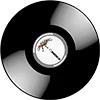
Big Beat — broken beats, ’90s funk and rock energy: genre history, signature sound, key artists and releases, how it differs from breaks/house/hip-hop, production tips, and a starter playlist.
Big Beat is a powerful, dance-floor branch of electronic music from the mid-to-late 1990s, born at the crossroads of breakbeat, hip-hop, funk, and rock riffs. Its hallmarks: fat sampled drums, aggressive bass, shouty scratches, “dirty” guitars, short vocal hooks, and unbridled dynamics built for big rooms and festival stages.
Short definition
Big Beat is the “big-room sound”: heavy broken beats (typically 115–135 BPM), overdriven drums and bass, funky and rock-’n’-roll samples, showy breaks and drops, often with elements of scratching and rap-style vocals.
History & context
Roots (late 1980s — early 1990s)
-
Breakbeat and hip-hop provided the foundation: chopped drum loops, a sampling culture, and the DJ’s mindset.
-
Funk and soul of the ’60s–’70s — an endless groove source (drum hits, horns, guitar chops).
-
Rock and punk added bite and “live” grit — from tough guitar riffs to shouted samples.
-
Acid house and big-room aesthetics — filters, sweeps, and those climactic “pump” moments.
The UK explosion (1994–1999)
-
Brighton: around the Big Beat Boutique club night and the Skint Records label, a signature “fat” sound takes shape (Fatboy Slim, Midfield General, Bentley Rhythm Ace, Lo-Fidelity Allstars).
-
London: the Heavenly Social club and impulses from Mo’Wax/Wall of Sound; The Chemical Brothers cement the aesthetic with aggressive breaks, acid lines, and rock samples.
-
Mainstream: radio hits and heavy video rotation — “Block Rockin’ Beats,” “Setting Sun,” “The Rockafeller Skank,” “Right Here, Right Now,” “Praise You,” “History Repeating.” The music spills into ads, film, and games — Big Beat becomes a face of the late ’90s.
Diffusion and decline (2000s)
-
With the rise of nu-skool breaks, electroclash, filter house, and later blog-house/EDM, some artists shifted tempo and toolkits, and Big Beat dissolved into neighboring styles. The genre survives as “golden-era classic,” resurfacing in nostalgic releases and soundtracks.
Sound & production traits
Rhythm and tempo
-
BPM: usually 115–135 (sometimes broader — 105–140).
-
Drums: sampled breaks, parallel compression, saturation/overdrive, a touch of lo-fi/bit-crush, “pump” from filters and sidechain.
Bass
-
Granular and overdriven bass riffs, sometimes acid 303 lines.
-
One-shot + sub technique: a punchy mid-bass (distorted) with a clean sine underneath.
Sampling and collage
-
Funk hits, horns, organ stabs, shouts, short phrases from older records.
-
Scratches and turntablism as dramatic punctuation.
-
Rights & clearance: commercial releases require proper sample clearance.
Arrangement
-
The “intro → groove → break → drop → variations” formula, with breaks often built on a changed drum loop and filter sweeps.
-
Frequent micro-motif changes, collage feel, and a “sound punch” every 8–16 bars — to keep the floor locked in.
Tools
-
Historically: Akai S-series, MPC, E-mu, SP-1200, guitars and live percussion, tube overdrive.
-
Later: DAWs (Ableton/Logic), samplers and drum machines, creative distortions, transient shapers, multi-band/tape-style saturation.
Big Beat track structure (by layers)
-
Drum pedestal: 2–3 layers of breaks (main + crash loop + “dirty” layer), per-track EQ, shared shaper.
-
Bass core: a short 1–2-bar riff; mid-bass in mono, sub rolled off below ~25–30 Hz.
-
Hooks: guitar/organ/brass samples, vocal “hey!”/“woo!” shouts, spoken-word cuts.
-
FX and sweeps: bends, reverse hats, noise, scratches, sirens.
-
Break/drop: filter auto-sweeps, kick drop-out, a 1/2–1-bar pause, return with a new loop or riff transposition.
Key artists & releases (a starter guide)
-
The Chemical Brothers — “Setting Sun,” “Block Rockin’ Beats,” albums Dig Your Own Hole / Surrender.
-
Fatboy Slim — “The Rockafeller Skank,” “Praise You,” “Right Here, Right Now,” album You’ve Come a Long Way, Baby.
-
The Prodigy — The Fat of the Land (on the border of breakbeat/Big Beat with punk drive: “Firestarter,” “Smack My…,” “Breathe”).
-
Propellerheads — “History Repeating,” “Spybreak!” (iconic ’90s sound for cinema/ads).
-
The Crystal Method — “Busy Child,” “Keep Hope Alive” (an American take with a big sound).
-
Bentley Rhythm Ace, Lo-Fidelity Allstars, Midfield General, Overseer, Junkie XL, Freestylers — shades ranging from funk-leaning to hard-industrial.
How is Big Beat different from breaks/house/hip-hop?
| Pair | Key difference |
|---|---|
| Big Beat vs Breaks | Big Beat is “thicker” and louder, with heavier drum/bass distortion, more rock guitars and shouted vox; songcraft aims at radio and festival impact. |
| Big Beat vs House | No straight 4/4 kick as the base: broken breaks dominate; the groove rides on hats and snares’ “swing.” |
| Big Beat vs Hip-hop | Higher tempos, more collage and “acid” FX, EDM-style drops; rap may appear, but isn’t required. |
Cultural impact
-
Soundtracks and ads: instantly readable riffs and “punch” made the genre perfect for TV spots and action scenes.
-
Festival aesthetic: the big-room format and “universal drive” tied Big Beat to late-’90s mass club culture.
-
Legacy: many techniques flowed into nu-skool breaks, electro house, blog-house, and modern pop production.
Hands-on guide for producers
Kickoff plan
-
Build the main break (surgical low/mid cuts, parallel compression).
-
Add a contrasting counter-break (hats/shakers/percussion loop).
-
Create a 2-bar mid-bass riff + clean sub.
-
Find 2–3 hooks (guitar, horn, vocal shot) and spread them across registers.
-
Design the break/drop with filters, reverses, and a 1/2–1-bar pause.
Tricks
-
Layered kick: “punch” (short) + “body” (longer) → shared bus saturator.
-
Transient shapers on the snare: more “crack,” shorter tail.
-
Sidechain the mid-bass and FX to the kick — a breathing groove.
-
Auto LP/HP sweeps on groups — fast rises before the drop.
-
Light stereo spread on highs, mono low end up to ~120 Hz.
Where a listener should start
-
“Genre business cards” — “Block Rockin’ Beats,” “The Rockafeller Skank,” “Praise You.”
-
For cinematic/spy vibes — Propellerheads “Spybreak!” / “On Her Majesty’s Secret Service.”
-
American angle — The Crystal Method “Busy Child,” Junkie XL Saturday Teenage Kick.
-
Funk-chaos — Bentley Rhythm Ace “Bentley’s Gonna Sort You Out!”.
FAQ
Is Big Beat a subgenre of breaks?
More like a “neighbor”: shared breakbeat roots, but Big Beat pushes distortion harder, leans on rock elements, and favors radio/festival dramaturgy.
What BPM should I choose?
Start around 120–128 BPM — a universal zone for a “fat” groove.
Can I make Big Beat without samples?
Yes: played guitars/horns, your own drums and synths can replace samples entirely, especially if you keep the collage approach and the mix “punch.”
Summary
Big Beat is the ’90s’ “broken” energy where hip-hop sampling, funky groove, and rock swagger fuse into a big, noisy, cheeky, and very danceable sound. Its peak lived in the era of CD singles and music TV, but the genre’s tricks still work: a heavy break, a short riff, a loud drop — and the dancefloor is already on your shoulders.

